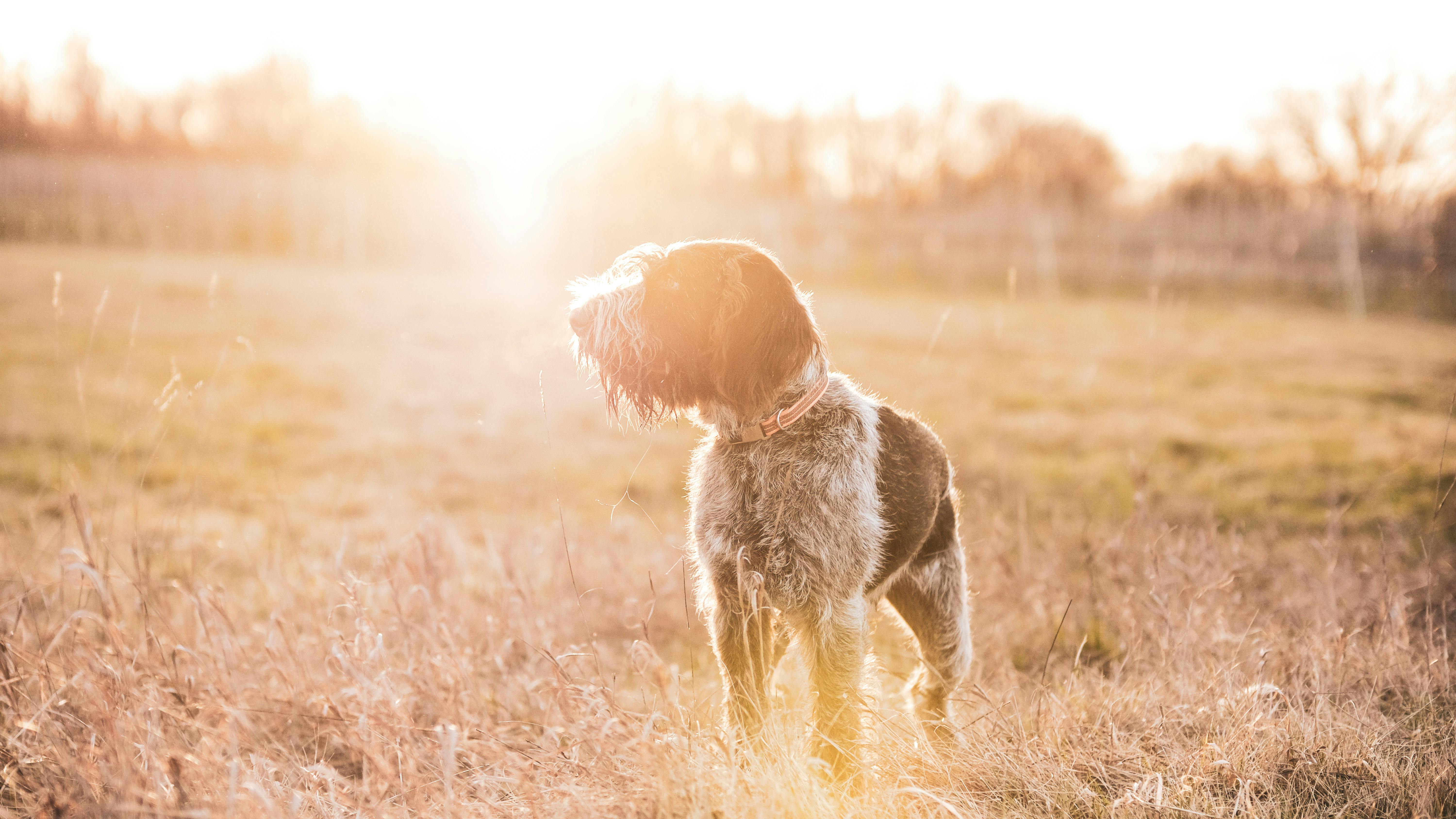In this article, you will learn about whether dogs groom themselves. You might have seen cats cleaning themselves, but what about dogs? Do they have the same habit? We will explore this interesting question and find out if dogs groom themselves like cats do. It’s an intriguing topic that will give you a better understanding of your furry friend’s grooming habits. So let’s dive in and discover the answer together!
Understanding Dog Grooming
Dog grooming refers to the process of cleaning and maintaining the hygiene of dogs. It involves various activities such as bathing, brushing, trimming nails, and cleaning ears. Grooming is essential for the overall health and well-being of your furry friend. By keeping your dog clean and well-groomed, you can help prevent health issues and maintain a strong bond with your pet.
Defining Dog Grooming
Dog grooming encompasses a wide range of practices that aim to enhance the appearance and hygiene of dogs. It includes both basic grooming tasks, such as bathing and brushing, as well as more specialized practices like trimming fur and nails. Grooming can be done at home or by professional groomers who have specific knowledge and training in dog care.
Importance of Dog Grooming
Grooming plays a crucial role in keeping your dog healthy and happy. Here are some reasons why dog grooming is important:
-
Maintaining Healthy Skin and Coat: Regular grooming helps to remove dirt, debris, and dead hair from your dog’s coat, preventing matting and skin irritation. It also stimulates the production of natural oils, which keep the skin moisturized and the coat shiny.
-
Early Detection of Health Issues: During the grooming process, you have the opportunity to closely examine your dog’s body for any signs of skin infections, lumps, or parasites. Finding these issues early on allows for prompt veterinary intervention and treatment.
-
Preventing Matting and Tangling: Dogs with long or curly hair are prone to matting and tangling. Regular brushing can minimize the risk of these issues, which can be painful for your dog and require extensive grooming or even shaving to resolve.
-
Ensuring Proper Nail Length: Overgrown nails can cause discomfort and affect your dog’s ability to walk and run. Regular nail trimming during grooming helps to maintain the appropriate length, reducing the risk of injury or infections.
-
Maintaining Ear and Dental Health: Grooming includes cleaning your dog’s ears and teeth. Regular cleaning of ears can prevent ear infections, while brushing your dog’s teeth removes plaque and tartar buildup, preventing dental diseases.
-
Bonding and Socialization: Regular grooming sessions allow you to spend quality time with your dog, strengthening the bond you share. It also helps your dog become accustomed to being handled, making veterinary visits and other grooming procedures less stressful.
Self-Grooming in Animals: An Overview
Self-grooming is a natural instinct that many animals possess, including dogs. It refers to the behavior of animals cleaning and maintaining their own bodies. Dogs engage in self-grooming activities to keep themselves clean and free from dirt and parasites.
Natural Instincts for Self-Grooming
Dogs have natural instincts for self-grooming, which are ingrained in their behavior. These instincts include:
-
Licking: Dogs use their tongues to lick their fur, cleaning off any dirt or debris. This action also helps to distribute natural oils throughout the coat, keeping it healthy and shiny.
-
Biting and Scratching: Dogs may bite or scratch at certain areas of their bodies to remove irritants, such as fleas or ticks. This instinctual behavior helps keep their skin free from pests and provides relief from itching or discomfort.
Importance of Self-Grooming
Self-grooming is vital for dogs as it serves several purposes:
-
Maintaining Fur Hygiene: Dogs rely on self-grooming to keep their fur clean and free from dirt and debris. Regular self-grooming helps prevent matting and tangling, which can lead to skin issues.
-
Enhancing Comfort: Self-grooming allows dogs to address any irritations or itchy spots on their bodies. By biting, scratching, or licking, dogs can alleviate discomfort and keep their skin healthy.
-
Promoting Bonding: While self-grooming is a solitary activity, it can also be a social behavior when dogs groom each other or when you observe and interact with your dog during their self-grooming sessions. These moments can strengthen the bond between you and your furry friend.

Do Dogs Groom Themselves
Yes, dogs groom themselves to a certain extent. While they may not have the same meticulous self-grooming habits as cats, dogs do engage in grooming behaviors that help them maintain their hygiene.
Signs of Dog Self-Grooming
You can observe the following signs of self-grooming in your dog:
-
Licking and Chewing: Dogs use their tongues to lick their bodies and chew at specific areas, such as their paws or tails. This behavior is an instinctual way for dogs to clean themselves and alleviate any discomfort.
-
Rolling and Scratching: Dogs sometimes roll on the ground or scratch themselves against objects to remove dirt or irritants from their fur. This behavior is a form of self-grooming, helping dogs keep their coats clean and free from pests.
Comparison with Other Pets
While dogs do groom themselves, their self-grooming habits differ from those of other pets. Cats, for example, are known for their extensive self-grooming routines, spending a significant amount of time cleaning their fur. Dogs, on the other hand, are generally more focused on grooming particular areas or responding to discomfort.
Methods of Dog Self-Grooming
Dogs employ various methods to groom themselves and maintain their hygiene. These methods include licking and biting, rolling behavior, shedding, and scratching.
Licking and Biting
Licking and biting are the primary methods of self-grooming for dogs. They use their tongues to lick their fur, removing dirt, debris, and loose hair. This behavior also helps stimulate the production of natural oils, keeping the coat moisturized and healthy.
Biting is another way dogs groom themselves. They may bite or chew at specific areas, such as their paws or tail, to remove irritants like fleas or ticks. Dogs also bite or chew to alleviate discomfort from itching or dry skin.
Rolling Behavior
Dogs often roll on the ground or rub against objects as a form of self-grooming. This behavior helps them remove dirt or debris that may have accumulated on their fur. Rolling or rubbing can also provide relief from itching or a scratchy sensation.
Shedding and Scratching
Shedding is a natural process in which dogs lose old or damaged hair to make room for new growth. By shedding, dogs eliminate dead hair and keep their coat healthy. Scratching helps remove loose hair and alleviate itchiness, which can be caused by dry skin or pests.

Purpose of Dog Self-Grooming
Self-grooming serves several important purposes for dogs. It helps them maintain skin health, regulate body temperature, and protect against parasites.
Maintaining Skin Health
Self-grooming helps dogs keep their skin clean and free from irritants. By licking, biting, and scratching, dogs remove dirt, debris, and dead skin cells from their fur, preventing the buildup of bacteria or fungi. This grooming process also stimulates the production of natural oils, which help moisturize the skin and maintain its elasticity.
Temperature Regulation
Dogs rely on self-grooming to regulate their body temperature. When dogs sweat, they cool down by panting, but they also rely on evaporation from their moist fur to dissipate heat. By keeping their fur clean and well-groomed, dogs ensure adequate airflow, allowing their bodies to regulate temperature efficiently.
Protection Against Parasites
Self-grooming is crucial for protecting dogs against parasites such as fleas and ticks. By licking, biting, and scratching, dogs remove these pests from their bodies, reducing the risk of infestation. Additionally, self-grooming can help detect and address any skin issues caused by parasites, allowing for early intervention and treatment.
Limits of Dog Self-Grooming
While self-grooming is beneficial, there are limits to what dogs can achieve on their own. Certain areas of their bodies may be challenging for them to reach, self-grooming may not effectively address underlying health problems, and there is a risk of over-grooming.
Areas Dogs Can’t Reach
Dogs may struggle to groom certain areas of their bodies, such as their ears, back, and tail. These areas require more assistance from humans to maintain proper hygiene. Regular checks and grooming in these hard-to-reach areas can help prevent issues like ear infections or matting.
Effectiveness Against Health Problems
While self-grooming can help prevent and address certain skin issues, it may not be sufficient for treating severe health problems. Dogs with allergies, infections, or underlying medical conditions may need additional care beyond self-grooming. Veterinary intervention, medication, or specialized grooming may be necessary in such cases.
Risks of Over-grooming
In some cases, dogs may engage in excessive grooming behavior, leading to over-grooming. Over-grooming can cause skin irritation, hair loss, and even open sores. It may be a sign of underlying health or behavioral issues, and professional intervention may be needed to address the underlying cause and prevent further damage.

The Role of Dog Breeds in Self-Grooming
Different dog breeds have varying grooming needs and habits. Some breeds have specific grooming requirements, while others have self-grooming habits influenced by their breed characteristics.
Breed-Specific Grooming Needs
Certain dog breeds, such as those with long or curly hair, require more frequent grooming to prevent matting and tangling. Breeds with short hair may require less grooming but still benefit from regular brushing and maintenance. Understanding the specific grooming needs of your dog’s breed can help you provide appropriate care.
Does Breed Influence Self-grooming Habits
While breed characteristics can influence self-grooming habits, it is essential to note that individual dogs within a breed may have unique grooming preferences and needs. Some dogs may naturally engage in more self-grooming behaviors, while others may not have the same inclination. It is important to observe and understand your dog’s grooming habits as an individual.
Human Aid in Dog Grooming
While dogs can groom themselves to a certain extent, human aid is often necessary to ensure proper grooming. Knowing when to intervene, choosing the right grooming tools, and considering professional grooming services are all important aspects of dog care.
When to Intervene
Intervention may be needed when dogs are unable to groom certain areas or when specific grooming tasks require human assistance. This includes trimming nails, cleaning ears, or brushing hard-to-reach areas. Additionally, if you notice any abnormalities during self-grooming, such as skin issues or excessive itching, it is important to seek the help of a veterinarian.
Choosing the Right Grooming Tools
Using the right grooming tools is crucial for ensuring a safe and effective grooming session. This includes selecting appropriate brushes, combs, shampoos, and nail clippers based on your dog’s breed and individual needs. Consult with a professional groomer or veterinarian to determine the best grooming tools for your furry friend.
Professional Dog Grooming Services
Professional dog grooming services can provide a range of grooming treatments and assistance. Groomers are trained to handle various breeds and have specialized knowledge and equipment to cater to specific grooming needs. If you are unsure about grooming your dog at home or need specialized care, professional grooming services can be a great option.
Hygiene and Emotional Aspects of Dog Grooming
Dog grooming not only impacts physical hygiene but also has emotional aspects that contribute to the overall well-being of the dog.
Connection with Dog’s Mental Health
Regular grooming sessions can have a positive impact on a dog’s mental health. Grooming provides an opportunity for bonding, social interaction, and positive reinforcement. It helps build trust between the dog and the owner and allows for the dog to feel comfortable and secure during grooming procedures.
Effect on Human-Animal Bond
Grooming sessions strengthen the bond between dogs and their owners or caregivers. It is a time of mutual care and affection, where both parties can engage in gentle touch and communication. The act of grooming can be relaxing and enjoyable for the dog, fostering a deeper connection and enhancing the human-animal bond.
Conclusion: Balancing Self-Grooming and Human Aid
In conclusion, self-grooming is an important aspect of a dog’s life, allowing them to maintain hygiene and address basic grooming needs. However, human aid is often necessary to ensure optimal grooming and address more complex grooming tasks. By recognizing the importance of both self-grooming and human assistance, and creating a healthy grooming habit, you can keep your dog clean, healthy, and happy. Remember, regular grooming not only maintains physical well-being but also contributes to the emotional well-being and bond between you and your furry companion.
Author: Jackson




